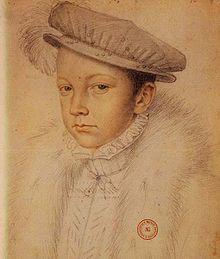
Francis II was King of France from 1559 to 1560. He was also King of Scotland as the husband of Mary, Queen of Scots, from 1558 until his death in 1560.

The French Wars of Religion were a series of civil wars between French Catholics and Protestants from 1562 to 1598. Between two and four million people died from violence, famine or disease directly caused by the conflict, and it severely damaged the power of the French monarchy. One of its most notorious episodes was the St. Bartholomew's Day massacre in 1572. The fighting ended with a compromise in 1598, when Henry of Navarre, who had converted to Catholicism in 1593, was proclaimed King Henry IV of France and issued the Edict of Nantes, which granted substantial rights and freedoms to the Huguenots. However, Catholics continued to disapprove of Protestants and of Henry, and his assassination in 1610 triggered a fresh round of Huguenot rebellions in the 1620s.

The House of Guise was a prominent French noble family that was involved heavily in the French Wars of Religion. The House of Guise was the founding house of the Principality of Joinville.

Antoine, sometimes called Antoine of Bourbon, was King of Navarre from 1555 until his death in 1562 as the husband and co-ruler of Queen Jeanne III. He was the first monarch of the House of Bourbon, of which he became head in 1537. Despite being first prince of the blood in France, Navarre lacked political influence and was dominated by King Henry II of France's favourites, the Montmorency and Guise families. When Henry II died in 1559, Navarre found himself sidelined in the Guise-dominated government, and then compromised by his brother's treason. When Henry's son, King Francis II of France, soon died in turn, Navarre returned to the centre of politics, becoming Lieutenant-General of France and leading the army of the crown in the first of the French Wars of Religion. He died of wounds sustained during the Siege of Rouen. He was the father of King Henry IV, France's first Bourbon king.
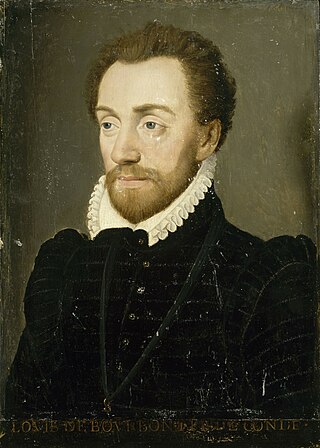
Louis de Bourbon, 1st Prince of Condé was a prominent Huguenot leader and general, the founder of the Condé branch of the House of Bourbon. Coming from a position of relative political unimportance during the reign of Henri II, Condé's support for the Huguenots, along with his leading role in the conspiracy of Amboise and its aftermath, pushed him to the centre of French politics. Arrested during the reign of Francis II then released upon the latter's premature death, he would lead the Huguenot forces in the first three civil wars of the French Wars of Religion before being executed after his defeat at the Battle of Jarnac in 1569.
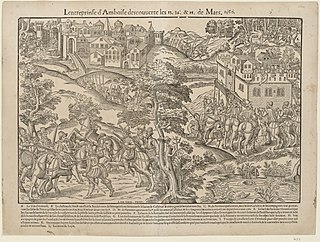
The Amboise conspiracy, also called Tumult of Amboise, was a failed attempt by a Huguenot faction in France to gain control over the young King Francis II and to reverse the policies of the current administration of Francis, Duke of Guise and Charles, Cardinal of Lorraine through their arrest, and potentially execution. Malcontent factions of Huguenots had been chafing under the French crown since the reign of Henry II and with the arrival of a new young king, saw their chance to take power for themselves. However the plot was uncovered ahead of time, and the Guise were ready for them. As such hundreds would be arrested, and many killed. Louis I, Prince of Condé was suspected of involvement, however he was able to flee south, and it was only after some months that the Guise were able to put him on trial. Shortly thereafter, the sickly Francis II died, their hold on the administration collapsed, and with it the conviction of Condé. This tumult would be one of the key steps in the collapse of crown authority that led to the first French War of Religion.

The Edict of Saint-Germain, also known as the Edict of January, was a landmark decree of tolerance promulgated by the regent of France, Catherine de' Medici, in January 1562. The edict provided limited tolerance to the Protestant Huguenots in the Catholic realm, though with counterweighing restrictions on their behaviour. The act represented the culmination of several years of slowly liberalising edicts which had begun with the 1560 Edict of Amboise. After two months the Paris Parlement would be compelled to register it by the rapidly deteriorating situation in the capital. The practical impact of the edict would be highly limited by the subsequent outbreak of the first French Wars of Religion but it would form the foundation for subsequent toleration edicts as the Edict of Nantes of 1598.
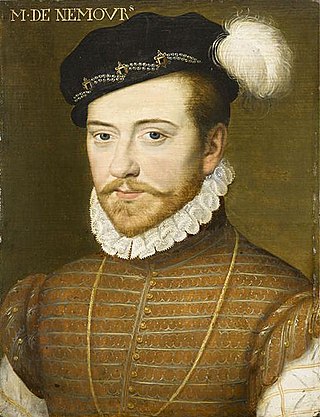
Jacques de Savoie, duc de Nemours was a French military commander, governor and Prince Étranger. Having inherited his titles at a young age, Nemours fought for king Henri II during the latter Italian Wars, seeing action at the siege of Metz and the stunning victories of Renty and Calais in 1554 and 1558. Already a commander of French infantry, he received promotion to commander of the light cavalry after the capture of Calais in 1558. A year prior he had accompanied François, Duke of Guise on his entry into Italy, as much for the purpose of campaigning as to escape the king's cousin Antoine of Navarre who was threatening to kill him for his extra-marital pursuit of Navarre's cousin.

The siege of Rouen was a key military engagement of the first French War of Religion. After having been seized by those opposing the crown on 16 April, the siege, beginning on 28 May and culminating on 26 October brought the important city of Rouen back into the crowns control. The fall of Rouen would set the stage for the main battle of the war at Dreux several months later.
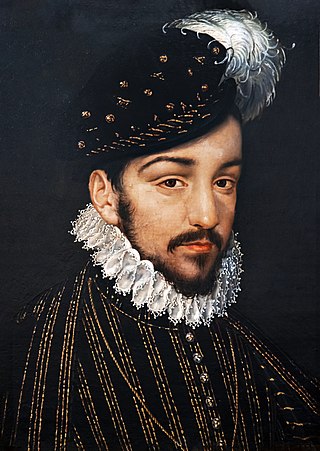
The Peace of Longjumeau was signed on 23 March 1568 by Charles IX of France and Catherine de' Medici. The edict brought to an end the brief second French Wars of Religion with terms that largely confirmed those of the prior edict of Amboise. Unlike the previous edict it would not be sent to the Parlements to examine prior to its publication, due to what the crown had felt was obstructionism the last time. The edict would not however last, and it would be overturned later in the year, being replaced by the Edict of Saint-Maur which outlawed Protestantism at the beginning of the third war of religion.
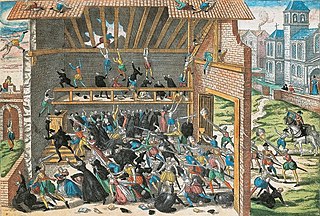
The Massacre of Vassy was the murder of Huguenot worshippers and citizens in an armed action by troops of the Duke of Guise, in Wassy, France on 1 March 1562. The massacre is identified as the first major event in the French Wars of Religion. The series of battles that followed concluded in the signing of the Peace of Amboise on 19 March 1563.

The surprise of Meaux was a failed coup attempt by leading aristocratic Huguenots which precipitated the second French War of Religion. Dissatisfied with their lot, and under the pretext of fear of extermination, Louis, Prince of Condé and Gaspard II de Coligny plotted to seize the king, Charles IX, while he was staying near Meaux. Alerted by the mustering of the Huguenots, the royal court made a dash for Paris, fighting off attempts to break through to them en route. Their plan foiled, the Huguenots laid siege to the city, beginning the second war. The event would be of lasting importance in the reputation it gave its architects for sedition.

The siege of Orléans was the final key military engagement of the first French War of Religion. Having lost the Battle of Dreux the rebel Huguenots fell back with their remaining forces to the city. François, Duke of Guise, the only non captive royal commander, moved to lay siege to the town, hoping its capitulation would bring about a total victory for the crowns forces. However, despite reducing the suburbs, he would be assassinated at the siege before he could bring it to a conclusion. As a result the captive Louis, Prince of Condé and Anne de Montmorency at Catherine de' Medici's direction were able to negotiate a compromise end to the first war in the Edict of Amboise.

On 24 February 1563, François, Duke of Guise was assassinated by the Huguenot Jean de Poltrot during the Siege of Orléans. His death represents a critical turning point in the French Wars of Religion. It would be the first major assassination in what would become a blood feud between the various aristocratic houses which would see the deaths of Louis, Prince of Condé and the St. Bartholomew's Day massacre follow. It also proved a decisive factor in bringing the first War of Religion to a close in the Edict of Amboise.
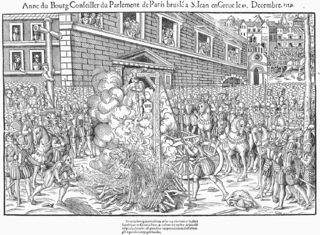
The trial and execution of Anne du Bourg was a critical event in the history of religious conflict in Paris, prior to the outbreak of the French Wars of Religion three years later. Anne du Bourg, a judge in the Parlement of Paris, would be executed, after calling King Henry II an adulterer and blasphemer, and refusing to affirm the Real presence. He would be garrotted and burned on 23 December 1559. Several of his colleagues who had been arrested along with him, would be forced to recant their beliefs before returning to re-join the court. His trial would inflame religious tensions in Paris, leading directly to the assassination of President Minard, and contributing to the powder keg that exploded in the riot of Saint Medard a few months later.

The Edict of July, also known as the first Edict of Saint-Germain was a decree of limited tolerance promulgated by the regent of France, Catherine de' Medici, in July 1561. Whilst it emphasised a continued commitment to banning Huguenot worship in France, it granted pardon for all religious offenses since the reign of Henry II, who had died two years earlier, which was a victory for the Protestant community. A further Protestant victory was in the reaffirmation of the removal of the death penalty for heresy cases. The edict would be overtaken by events, and ultimately left unenforced as France moved first to the landmark Edict of Saint-Germain and then into the Wars of Religion.

The Estates General of 1560–1561 was a national meeting of the three estates of France, the clergy, nobility and commoners convoked by François II, though he would die before it could begin. It represented the first meeting of the estates general in 76 years, the last one having been convened by Charles VIII at Tours. Meeting at Orléans the estates would be tasked with providing solutions to the crowns dire fiscal problems, a legacy of the Habsburg–Valois Wars, and the growing religious problem caused by the Reformation. The estates would however be unable to finish their deliberations, with Catherine de' Medici proroguing the session, and reconvening the estates general at a later date in 1561 at Pontoise, where she sought a more agreeable selection of delegates. Ultimately the work of the estates would solve neither the crowns fiscal insolvency or the religious conflict, which exploded in the first French War of Religion.
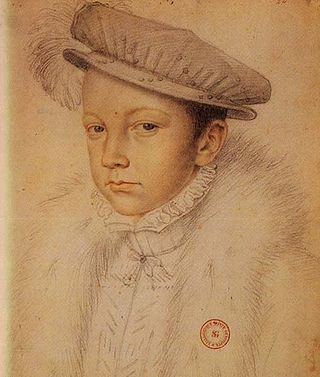
The Edict of Romorantin, was a decree designed to alter the prosecution of heretics, promulgated by the King of France, François II, in May 1560. The decree came in the wake of the Amboise conspiracy in which many Protestant Huguenots had participated. Conscious that the previous policy of persecution embodied in the edicts of Châteaubriant and Compiègne had thus failed, the crown and the chancellor altered their strategy by distinguishing for the first time between heretics and rebels. The edict would transfer the prosecution of heretics who had committed no other offence to the ecclesiastical courts, which lacked the power to give death sentences. The edict would be confirmed in January 1561 then superseded, first by the Edict of July, which maintained its provision concerning ecclesiastical courts, and by the more radical Edict of Saint-Germain.
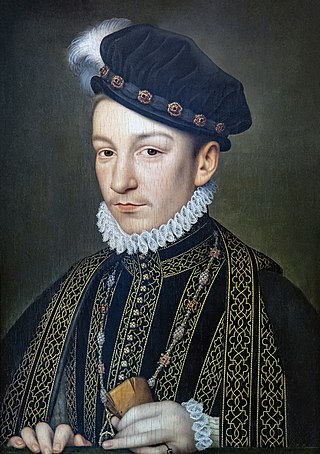
The Edict of Saint-Maur was a prohibitive religious edict, promulgated by Charles IX of France at the outbreak of the third war of religion. The edict revoked the tolerance that had been granted to Protestantism, in the edicts of Saint-Germain, Amboise and the peace of Longjumeau. The edict forbade the exercise of any religion other than Catholicism in the kingdom of France, and gave Protestants 15 days to vacate the kingdom. Ultimately the edict would be overturned in the landmark peace of Saint-Germain-en-Laye at the end of the third religious war in 1570 which restored recognition to Protestantism, alongside many other concessions.

The Edict of 19 April was a religious edict promulgated by the regency council of Charles IX of France on 19 April 1561. The edict would confirm the decision of the Estates General of 1560-1 as regarded the amnesty for religious prisoners. The edict would however go further in an effort to calm the unrest that was sweeping France, outlawing the use of religious epithets and providing a pathway for religious exiles to return to the country. Despite not being an edict of toleration for Protestantism, the more conservative Catholics would interpret the edict as a concession to the Huguenots, leading to the Parlement of Paris to remonstrate the crown. The edict would be endorsed and furthered in the more sweeping Edict of July a few months later, before it in turn was superseded by the first edict of toleration, the Edict of Saint-Germain.

